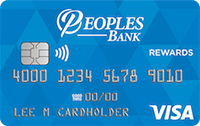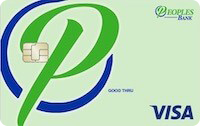Posted On: October 15, 2018 by Peoples Bank in: Budgeting Financial Education Personal Finance Saving Money

Saving money for a big expense, like a wedding or family vacation, can seem like a daunting task. Simply saving on a month-to-month basis can be a difficult on its own, but adding a big purchase down the road can throw a giant wrench in your budgeting plans.
So where do you start? And how can you achieve your goals without altering too much of your lifestyle? We asked Erin Huffman, regional branch operations manager in our Waukee location, to break down how she recommends saving for those big purchases.
Set your goals
To find out just how much money you’ll need to save, start by setting a number. For a big event, like a wedding, make a separate budget to find out the costs. Then carry that number over to your overall budget. If you’re going on a trip, factor in airfare, lodging, food, etc.
As always, the earlier you plan the better. If you know you’ll be part of a friend’s wedding across the country a year down the road, you can start saving for the trip and expenses now. Whether it’s $500 or $15,000, once you have that final number, you can start looking at your personal budget to see where you can slash costs and save.
For example, if you know you’ll have to spend $2,000 for a trip a year from now, you can work your way back to figure out how much you’ll have to save each month. If you divide out $2,000 among the 12 months, you get about $167. With that number in mind, you can tackle your savings goal one month at a time.
“I look at the time frame and how much I’ll need to save,” Huffman said. “That way I can see how much I need to save each month. It helps you figure out what and how many costs you’ll need to cut down to make that goal.”
You can separate all of your money into different savings accounts to keep your finances compartmentalized. This can be a huge help. Create a special savings account with your bank and promise not to touch the funds until the big purchase comes up.
Reduce unnecessary costs
This is the hard part.
Now that you know the dollar value you’ll need to save each month, it’s time to slash unnecessary costs to reach that goal. We hope you’ve already been saving and building an emergency fund, but we recommend leaving that money alone. You don’t want to dip into that essential fund for these purchases.
Instead, take a look at your monthly budget and find places where you can reduce spending. Your housing, transportation, utilities, clothing and debt costs are essential — they are called fixed costs for a reason — but the Starbucks coffee you’ve been purchasing almost every day? That can go.
“A big thing for me is coffee,” Huffman said with a laugh. “If I’m spending $5 here and there to go get coffee, how can I eliminate that and lower that budget to start putting some of those funds into a savings account instead of going out?”
If you spend between $1 and $5 on coffee every day, that adds up quickly. At the end of the month, you would have spent between $20 and $100. That’s between $240 and $1,200 per year — just on coffee. Compare that with how much an average coffee consumer spends while brewing at home ($45); it’s a huge disparity. The same goes for eating out or getting a beer with your friends after work. Those savings alone could get you substantially closer to your goals.
Staying disciplined in your budgeting is important but difficult. One of Huffman’s favorite tricks is to give herself an allowance of cash to spend each month. It’s a lot harder to part ways with a solid dollar bill than to swipe a card at a register.
“It’s just so much harder to spend a $20 bill than swipe my card,” Huffman said. “It’s funny, but it’s so true because you know you have a limited supply of cash on hand, whereas a debit card can seem like an endless fund.”
Money-growing options
When money sits in a traditional savings account, it incurs an almost negligible amount of interest — about 0.06 annual percentage yield on average. But there are other options to help those savings grow.
Certificates of deposit, or CDs, are a great way to stay disciplined and earn some extra money due to interest. CDs are funds that allow you to put money away for a certain amount of time. CD interest rates are substantially better than traditional savings accounts.
The one downfall to CDs is not having access to the funds over the term length. Otherwise, you could incur a penalty. To learn more about CDs, you can read one of our previous blogs.
Another option is a money market account, which offers the flexibility of a traditional savings account with a higher return. To learn more about Peoples Bank’s money market account offerings, click here.
Avoid last-ditch efforts
All told, these tips will help you reach these short-term savings goals, but they can also help you avoid debt. As we mentioned before, avoid dipping into an emergency savings funds, but also avoid borrowing, like using credit cards or taking out a personal loan.
If you want to earn the rewards of a credit card, whether that be through airline miles, cash back or points, make sure you have the funds to pay off the balance immediately. Having debt and interest payments can cost you much more than the original purchase, causing more stress down the road.
Enjoy!
Now that you have enough money to cover your big cost, you can finally take it easy. It isn’t easy reaching this stage, so now that you’re here, make sure to enjoy it.
These tips can easily apply toward any savings goals. So at the end of this journey, we hope you have some tools to use going forward to save for your next big event or adventure.




